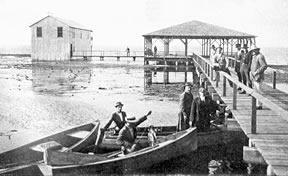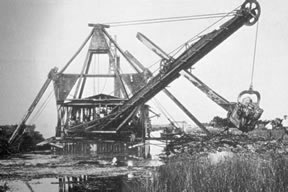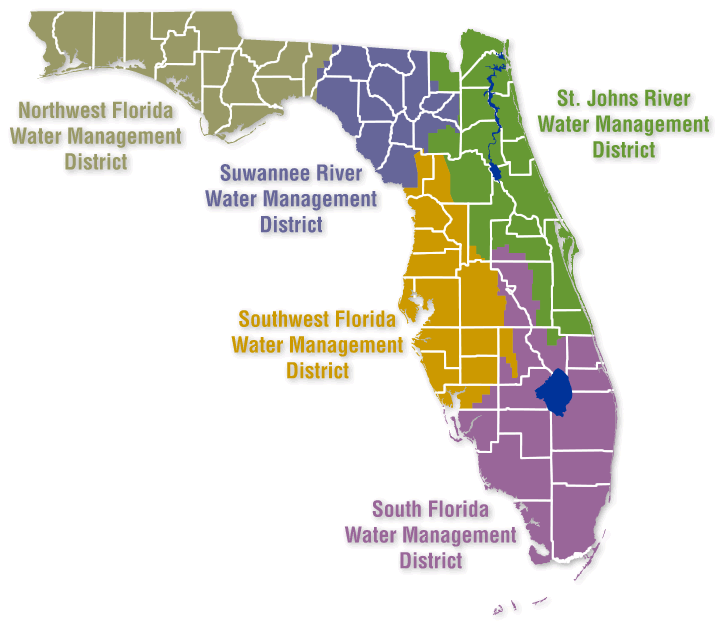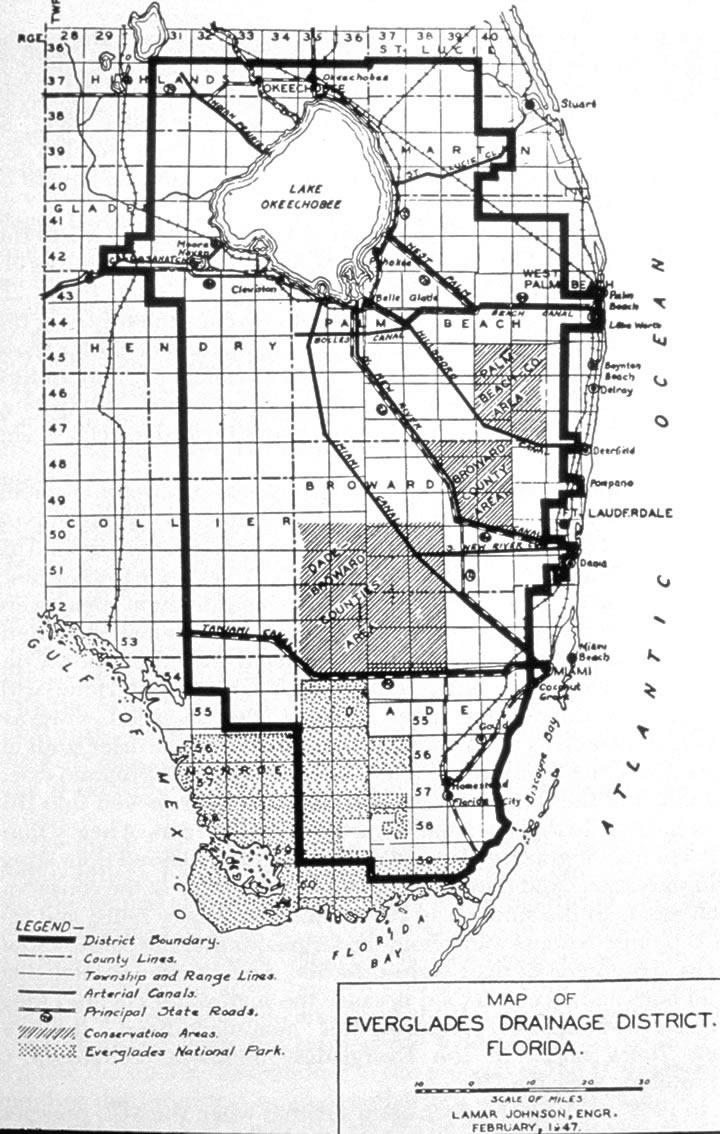1937
The Florida Legislature adopted the Soil Conservation Act, authorizing soil and water conservation Districts.
September 1937
Work was suspended on the Cross-Florida Barge Canal.
1939
The Southeastern Florida Joint Resources Investigation was initiated to prepare a long-range plan of land and water resources development.
1942
Muck farms around Lake Apopka began drainage water discharges into the lake. From 1942 to 1947, the farms expanded to 7,745 acres.
1944
Gov. Spessard L. Holland appointed a citizen’s committee to study Florida’s freshwater situation.
1947
Algal blooms were reported for the first time on Lake Apopka.

Lake Apopka was known for its sportfishing, but the good fishing declined as the lake deteriorated following the first report of an algal bloom in 1947.
1947
The Legislature established the Water Survey and Research Division within the State Board of Conservation as the state agency responsible for matters on water conservation and flood control.
1948
Congress passed the Flood Control Act and created the Central and Southern Flood Control Project. This system extended from Orlando in the north to the Everglades in the south and included most inflows and outflows to and from lake Okeechobee as well as parts of the upper St. Johns River. The system was to be designed and constructed by the U.S. Army Corps of Engineers and operated and maintained by the state. The Citizen’s Committee on Water Control was appointed by Gov. Millard F. Caldwell to determine the most appropriate state organization to meet the conditions of the Central and Southern Project
1949
The Legislature created the Central and Southern Florida Flood Control District to assume responsibility for the project. The group took over the duties of the Okeechobee Flood Control District and, by 1955, the assets and liabilities of the Everglades Drainage District. The group became the South Florida Water Management District in 1977. In many ways, the creation of the group was a turning point in water management history. Flood control was the primary purpose of the group project, but it was also required to manage water supply and conservation, fish and wildlife, and other associated resources.
1935
Construction began on the Cross-Florida Barge Canal.
July 1, 1933
The Florida State Board of Conservation was created to conserve Florida’s natural resources. It replaced three departments: the State Shell Fish Commission, the State Department of Game and Fresh Water Fish and the State Geological Survey. The Board consisted of the governor, the state supervisor of conservation, the secretary of state, the attorney general, the state comptroller, the state treasurer and the state superintendent of public instruction.
1932-1938
The Hoover Dike was constructed around Lake Okeechobee to contain further floods, and the Okeechobee Waterway (a 155-mile-long waterway from the Gulf to the Atlantic Ocean by way of the Caloosahatchee River, Lake Okeechobee and the St. Lucie Canal) was authorized and completed.
1931-1945
Florida saw drought, saltwater contamination in wells along the coast, and fires in dry muck soils.
1929
The Florida Legislature created the Okeechobee Flood Control District, which took over many of the activities of the Everglades Drainage District.
Sept. 16, 1928
A hurricane killed more than 1,800 people in towns south of Lake Okeechobee.
1927
Camps Canal was constructed, draining Paynes Prairie and redirecting Paynes Creek into Orange Lake.
1922
The C-1 Canal was built, carrying soils, nitrogen, phosphorus and large volumes of freshwater from the historical St. Johns River floodplain eastward to Turkey Creek and into the Indian River Lagoon.
1913
The General Drainage Act (Chapter 298 of Florida Statutes ) provided for creation of drainage Districts by petition of landowners.
1912
Workers completed the Intracoastal Waterway from Jacksonville to Miami.
1907
The Everglades Drainage District was created. Between 1907 and 1929, it spent $18 million and built 440 miles of canals and levees.
1905
A Board of Drainage Commissioners was created to oversee drainage in the state.
April 29, 1903
The Everglades were conveyed to the state by the federal government.
1901
The Drainage by Counties Act of 1901 enabled landowners to petition counties to build ditches, dams and canals, issue bonds for construction, and tax for maintenance, enlargement and repair of works.

Early canal work allowed once wet land to be drained for development and farming.



